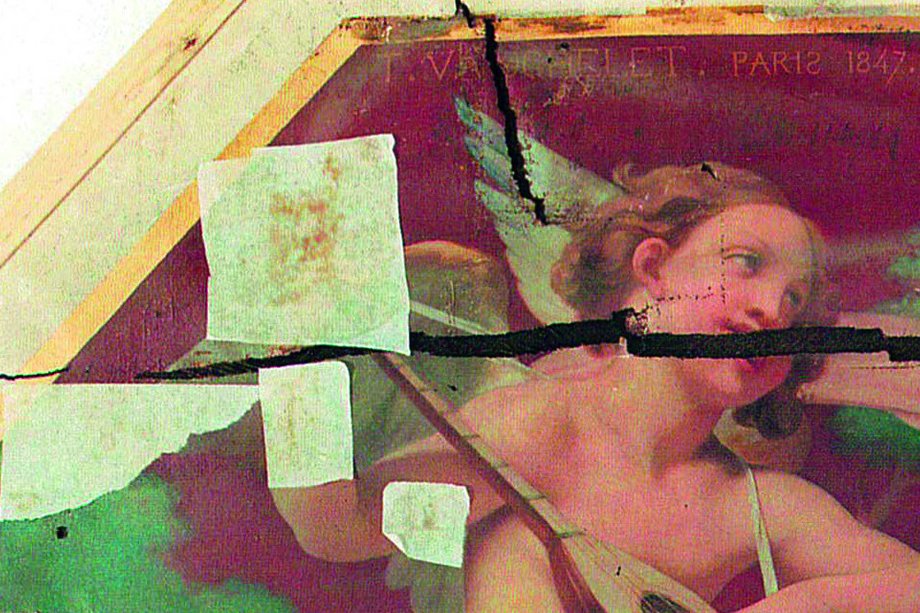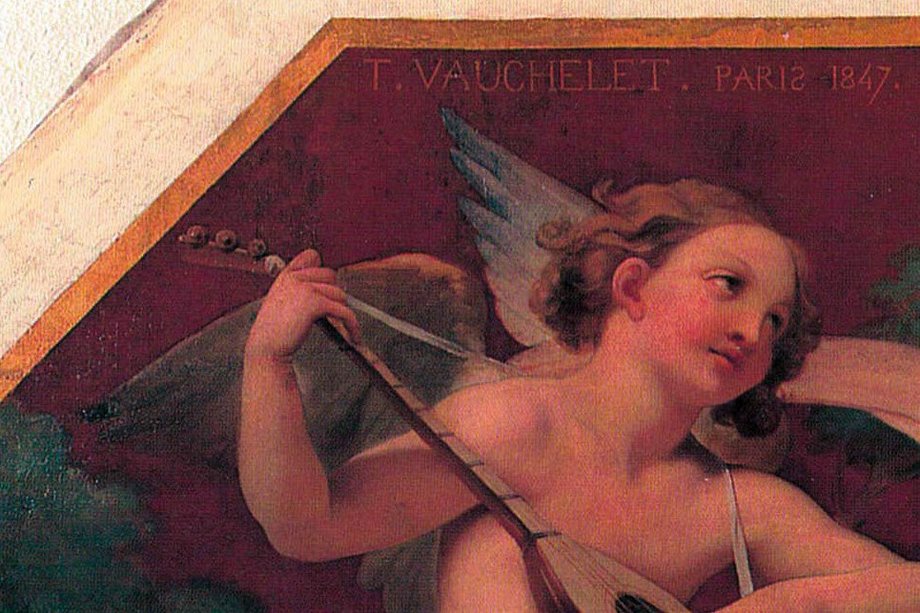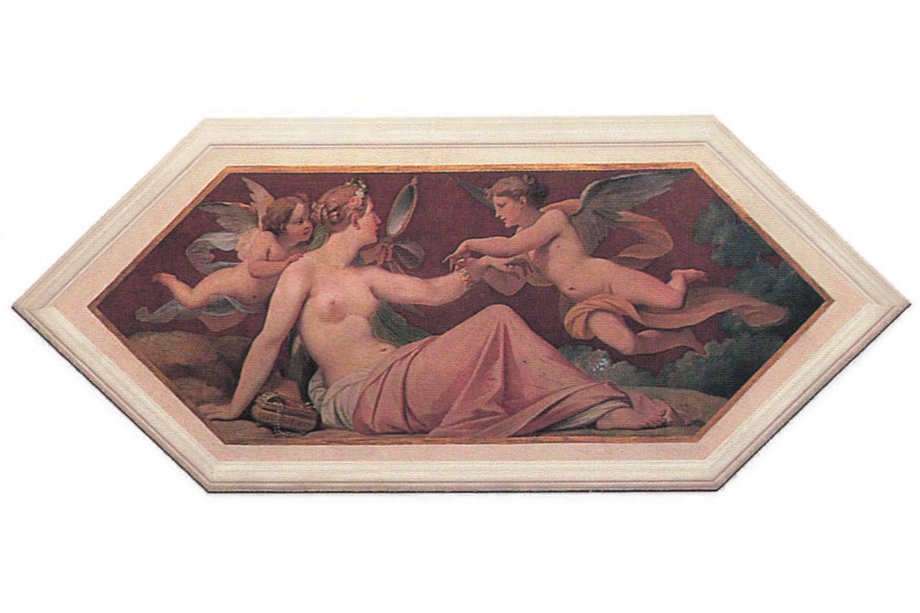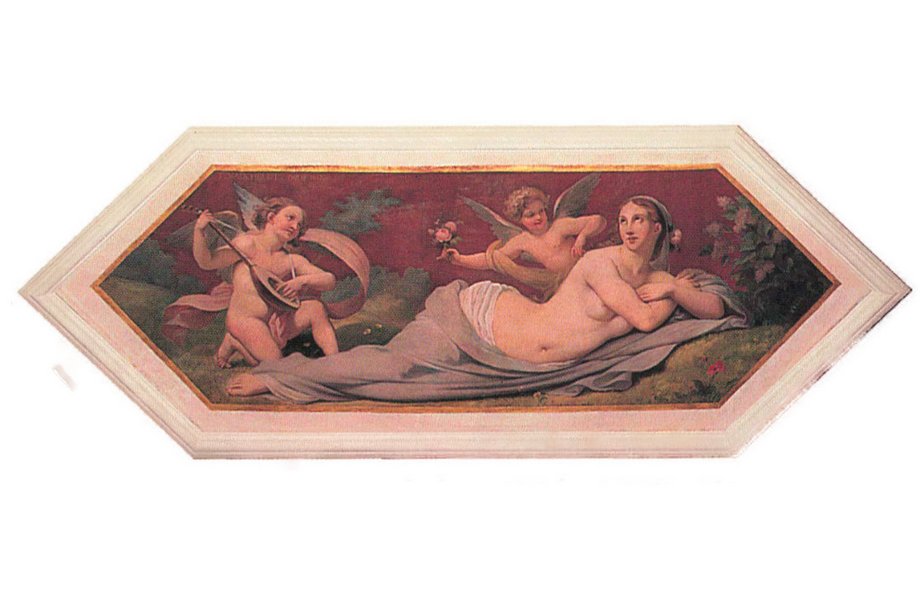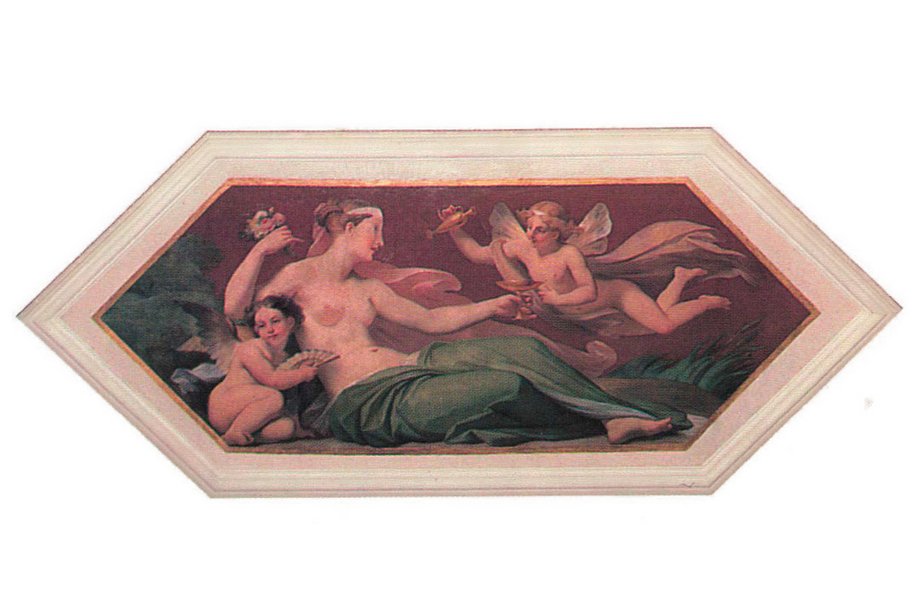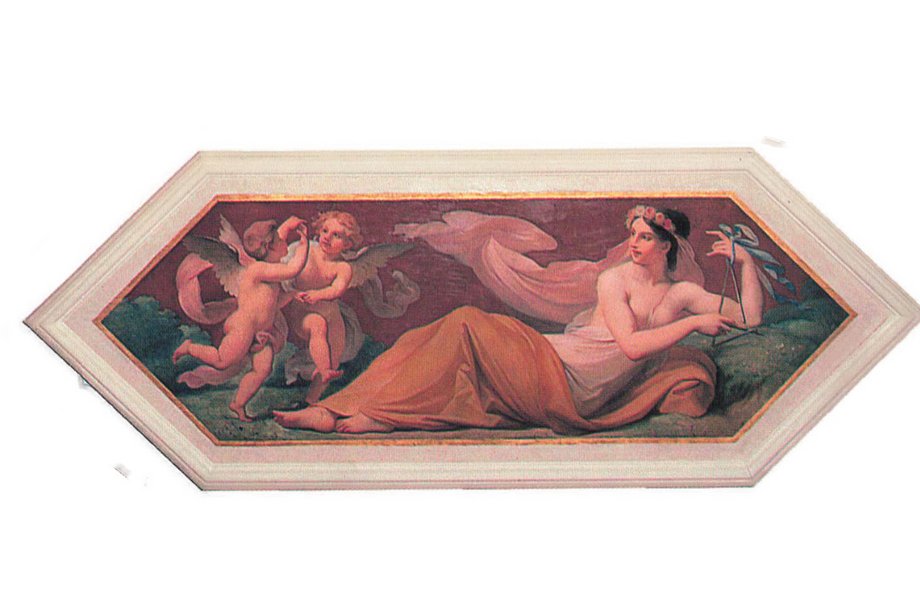Ceiling painting in the Mendelssohn Hall
The content on this page was translated automatically.
The four ceiling paintings in this room are not the result of the Budge couple's passion for collecting. Rather, they had a relatively long odyssey behind them before they were given their prominent place on the ceiling of the Mendelssohn Hall.
Originally, the four-part painting adorned the ceiling of the ballroom in Palais Jenisch, Grosse Bleichen 23. When the building was demolished in 1907, the paintings were left homeless. Improper storage and reworking, mainly due to water damage, had already damaged the paintings in Palais Jenisch. They were later stored for many years in the Museum of Hamburg History, from where they were handed over to the Hamburg Monument Protection Office.
Horst Hansen, honorary senator of the university, was able to secure the Commerzbank Foundation as a sponsor for the restoration. The challenge at the time was to restore the canvases, some of which were severely deformed and some of which had been torn along their entire length. With the help of special adhesives and special thermal processes, the gaping pieces could be joined together. The individual threads of the canvases were then joined, the paint layer cleaned and in some cases extensively supplemented and conserved.
"Allegory of Music" before and after restoration
The suspension in the Budge-Palais meant that the ceiling in the Mendelssohn Hall had to be structurally adapted.
In 1991, the hall with the four ceiling paintings was handed over to the University of Music and Drama.
In painting, artists have used allegories to convey complex ideas or non-representational facts through pictorial symbols and metaphors. In a way, they represent a hidden message to be discovered and deciphered by the viewer. The history of art knows very diverse relationships that are difficult to understand today. The allegorical depictions in the Mendelssohn Hall, on the other hand, are easier for the attentive viewer to grasp.

Théophile Auguste Vauchelet probably in 1865
Photograph on aluminum paper by Petit Pierre (1831-1909); Paris, musée d'Orsay
Trained in Paris, he made a brilliant career as a painter from the July Monarchy onwards. On royal commission, he created "The Surrender of Magdeburg" for the historical gallery of the Palace of Versailles and several religious paintings in Parisian churches (e.g. in the church of Saint-Sulpice). The "Four Evangelists" on the ceiling and "The Concert of Angels" in the apse of the small chapel of the Palais du Luxembourg are considered his most important works.
Vauchelet won several prizes with his genre paintings (second prize in Rome in 1827, first class medals at the Paris Salon of 1846 and first class medals in 1861). On July 2, 1861, he was made a knight in the Legion of Honor. Théophile Vauchelet died eleven years later and is buried in the Père-Lachaise cemetery in Paris.
